Taxila, Jandial
Q66134820Taxila (Old Indian Takshaçila, Greek Ταξίλα): the ancient capital of the eastern Punjab, the country between the rivers Indus and Hydaspes. The site consists of several parts, which belong to the Achaemenid, Greek, and Kushan periods.
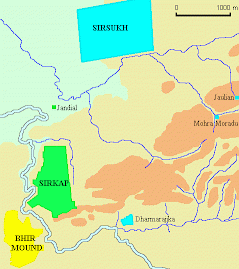
The sanctuary at Jandial, one of the sites collectively known as Taxila, is one of the greatest surprises in the Punjab, because the ruins are hard to distinguish from a Greek temple built according to the Ionic order. It is constructed on a 15 meters high artificial mound. Using Greek parallels, the structure in front of the building, which is unique in the Punjab, can be identified as an altar.
Perhaps, we might have expected a Greek temple. After all, Jandial is only 650 meters from the part of Taxila that is known as Sirkap, which was founded and rebuilt in the second century BCE by the Indo-Greek kings Demetrius and Menander. However, it is slightly odd - to say the very least - that the Jandial sanctuary appears to have been a Zoroastrian place of worship.
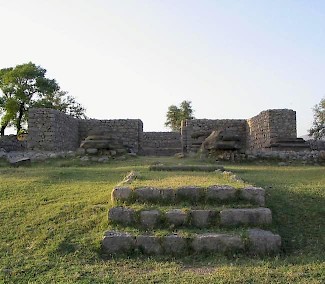
Probably, the temple, which measured about 45 x 30 meters, was dedicated to an Iranian god like Ahuramazda, Anahita, or Mithra. There are no archaeological indications that the eternal fire, so important in the Iranian world, was venerated at Jandial - but see below.
Technically, the temple would be a distyle-in-antis (i.e., it had two columns between two projecting walls). A pronaos, naos, and opisthodomos can also be discerned (entrance hall, cult room, back chamber). According to Philostratus, the author of the Life of Apollonius, the Pythagorean philosopher Apollonius of Tyana, visited Taxila (= Sirkap) and saw a temple (= Jandial) decorated with copper plates showing the exploits of Alexander the Great and Porus. Probably, this is just Philostratus' reworking of information he found in his sources, but maybe the author of his source saw a relief that he interpreted in this fashion.
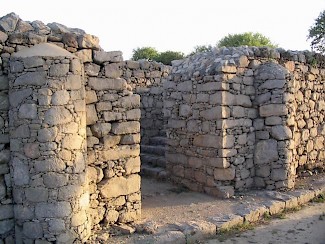
There are stairs inside the opisthodomos, so there must have been a second floor. This is important, because it proves that there was an elevated superstructure - definitely not a Greek element, but something that can easily be explained if the temple was dedicated to Ahuramazda. The sanctuary was, in this interpretation, a large artificial mound.
Archaeologists have shown that there were windows, which is also unusual for a Greek temple. A convincing explanation is that they did not serve to let in light, but oxygen for the sacred fire. This is one argument for the thesis that the temple was dedicated to Ahuramazda.
Numismatic evidence indicates that the sanctuary was still used in the late sixth century.
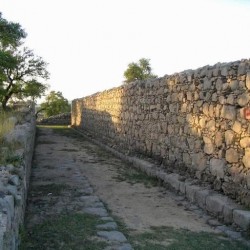 Jandial, wall |
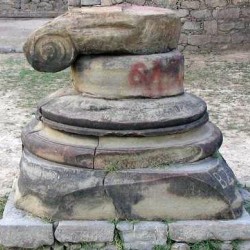 Jandial, Ionic capital |
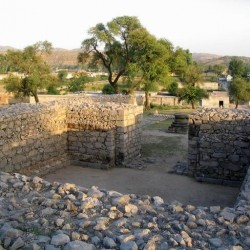 Jandial, cult room |
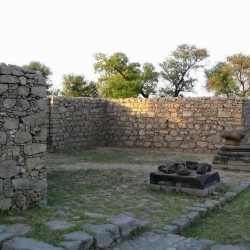 Jandial, entrance |